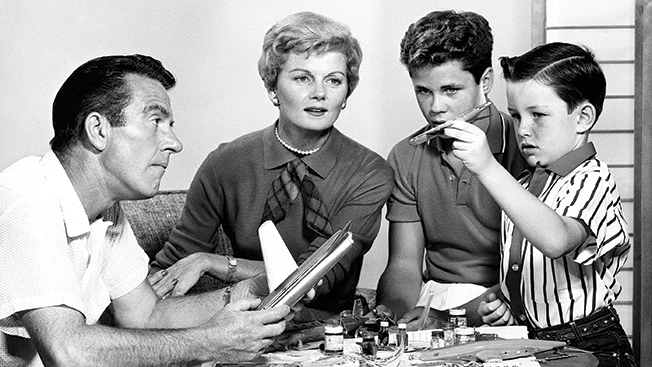
In recent years, at the far end of the channel lineup, a slew of upstart broadcast diginets, or subchannels, quietly started popping up thanks to changes in FCC regulations that let TV stations broadcast multiple channels. And while much of their programming—news, weather and lifestyle content characterized by low production values—would hardly be considered Emmy-worthy, some are stealing a page from cable networks like USA and TBS in their early days by leaning on reruns of classic TV shows.
MeTV, a channel that airs The Honeymooners, has been cleared in 94 percent of the U.S., according to Neal Sabin, vice chairman of parent Weigel Broadcasting Co. And Tribune Media's Antenna TV, a diginet whose schedule is filled with episodes of series like Leave It to Beaver, has cleared the top 20 markets and 75 percent of the country.
Even though some of these old shows predate the Cuban Missile Crisis, they are helping the diginets gain traction with advertisers in addition to market share. "It's been a good business since day one," said Steve Farber, Tribune's svp of operations. The channel is already profitable. "You don't need to be at 75 percent to start making money," Farber said.
It's not all about reruns. One diginet, the African American-targeted Bounce Media's Bounce TV, airs some original shows, including the upcoming Mann & Wife, starring two Tyler Perry regulars, David and Tamela Mann.

Bounce TV looks to original programming like Mann & Wife.
Currently, there are more than 200 diginets, which could grow to 300 in the next five years, according to Michael Kokernak, president of media consultancy Across Platforms. New entries this year include Katz Broadcasting's comedy channel Laff, which debuts in April, and Buzzr from FremantleMedia North America and Debmar-Mercury, which will feature game shows and launch this summer.
Fewer than 15 diginets have significant market share. Most attract direct response on a national level, and a combination of spot and direct response locally. (Only two channels—MeTV and Bounce TV—are tracked by Nielsen.) The bigger players, unsurprisingly, have been best able to break through with big brands. Bounce has attracted some 30 major advertisers, including Toyota, McDonald's and PepsiCo.
As for MeTV, it will hit between 20 and 30 percent national spot this year, said Sabin. Among those placing spots on MeTV is Horizon Media, including ads from Geico, said David Campanelli, the agency's svp, director of national TV. "We certainly don't compare MeTV to ABC, NBC or CBS, but we would compare it to a midsized cable network," Campanelli said.
According to Weigel's analysis of Nielsen 2+ numbers from last December, MeTV ranked seventh among cable networks between 9 a.m. and 5 p.m. weekdays. It edged up to No. 4 among cable channels in adults 35-64 in the same period. However, results are not as spectacular in the evening or with younger demos.
The diginet model can be a winner for local broadcasters. In many cases, "the stations aren't paying anything for the programming, and all they're doing is sharing the sales revenue," explained Mark Fratrik, svp, chief economist at the research firm BIA/Kelsey.
As for the genre's long-term prospects, "a lot of it depends on the content and if it can generate a rating," said Leo MacCourtney, president and CEO of ad rep firm Katz Television Group. "If it can, then it becomes more of a general market sell."
And there are other challenges. "It certainly feels like available spectrum is going to be harder to find in the major markets like New York or L.A.," said Jonathan Katz, founder of Katz Broadcasting and COO of Bounce TV. "But over time, that may change as broadcasters adapt certain technical standards that allow for even more robust use of their spectrum."